Hiroshima, a once-bustling city in Japan, found itself at the heart of a tragic moment in history. On August 6, 1945, the United States dropped an atomic bomb on this unsuspecting target, forever changing the landscape and the lives of its people. The reasons behind this devastating decision are complex, rooted in the geopolitical tensions of World War II. A guided walking tour through Hiroshima‘s streets offers a poignant and thought-provoking exploration of this pivotal event, shedding light on the immense human toll and the city’s remarkable journey towards recovery and resilience.
Key Points
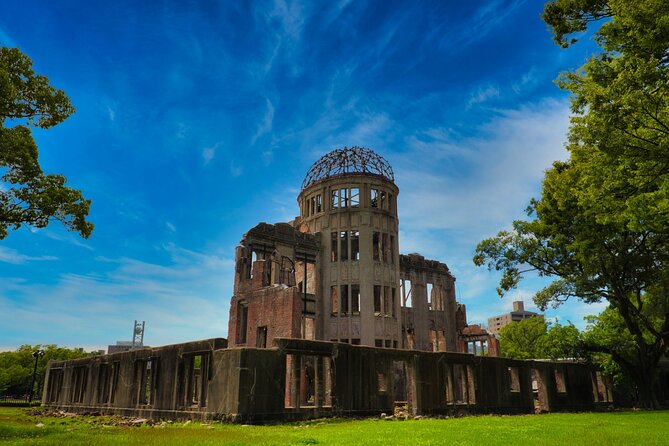
- Hiroshima was a major industrial hub producing military equipment, making it a strategic target for the United States during World War II.
- The atomic bomb dropped on Hiroshima on August 6, 1945, killed an estimated 70,000 people instantly, with the death toll reaching 140,000 by the end of 1945.
- The bombing had a profound and lasting impact on the city and its residents, with survivors suffering from severe burns, radiation sickness, and long-term health problems.
- Memorials and monuments in Hiroshima, such as the Peace Memorial Park and Museum, serve as reminders of the devastating consequences of nuclear warfare.
- Hiroshima’s transformation from a nuclear wasteland to a prosperous, forward-looking city is a remarkable story of resilience and a testament to the human spirit.
Historical Context of Hiroshima
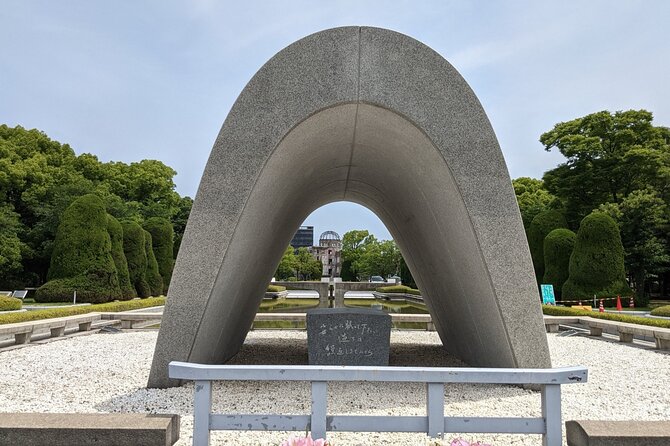
Hiroshima’s history as an important military city dates back to the 16th century, when it served as the seat of the powerful Mōri clan and a strategic location for controlling western Japan.
During the 20th century, Hiroshima became a major industrial center, producing military equipment and weapons. This made the city a target for the United States during World War II.
On August 6, 1945, the U.S. dropped the first atomic bomb on Hiroshima, devastating the city and its inhabitants. The attack killed an estimated 70,000 people instantly, and by the end of 1945, the death toll had reached 140,000.
Hiroshima’s history as a hub of military activity ultimately led to its tragic fate during the war.
If you're enjoying exploring Hiroshima on foot, you'll love these other walking tours we recommend
The Atomic Bomb and Hiroshima

The devastating impact of the atomic bomb dropped on Hiroshima on August 6, 1945, forever changed the city and its people.
Estimates suggest that the initial blast killed around 70,000 individuals instantly, and by the end of that year, the death toll had reached a staggering 140,000.
The effects of the bomb were devastating:
-
The intense heat and radiation caused widespread destruction, with buildings and infrastructure reduced to rubble.
-
Survivors suffered from severe burns, radiation sickness, and long-term health problems, including increased cancer rates.
-
The psychological trauma of the event left a lasting impact on the community, with many struggling to come to terms with the tragedy.
Impact on the City and Residents
In the aftermath of the bomb’s detonation, the city’s landscape was utterly transformed, with iconic structures reduced to rubble and the streets strewn with debris and the bodies of the dead.
Survivors emerged from the destruction, many with horrific burns and other injuries, struggling to comprehend the scale of the tragedy that had befallen their community.
The blast and resulting fires had devastated much of Hiroshima, leaving an estimated 70,000 people dead. In the days and weeks that followed, the death toll continued to rise as victims succumbed to their injuries or the effects of radiation exposure.
The bombing had a profound and lasting impact on the city and its residents, who grappled with the immense physical, emotional, and psychological toll.
Memorials and Commemorations
Memorials and monuments dot the city, serving as somber reminders of the devastation wrought by the atomic bomb.
The Peace Memorial Park and Museum stand as poignant testaments to the lives lost, while the iconic A-Bomb Dome, one of the few structures left standing after the blast, has become a powerful symbol of resilience.
Annually, on August 6th, the city hosts a solemn ceremony to commemorate the victims and pray for lasting peace.
The tour may include visits to:
- The Children’s Peace Monument, dedicated to the young victims.
- The Peace Bell, which rings out a message of hope.
- The Flame of Peace, which will burn until the last nuclear weapon has been destroyed.
Hiroshima Today: Rebuilding and Resilience
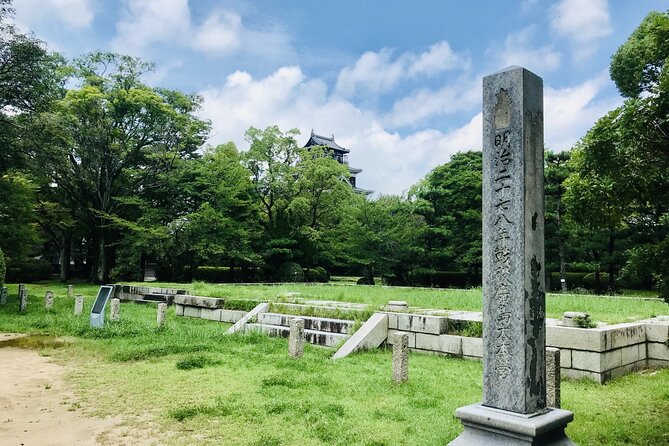
Since the devastation of the atomic bomb, Hiroshima’s resilient people have rebuilt their city into a thriving metropolitan area. Bustling streets, modern skyscrapers, and a vibrant economy now characterize the urban landscape, a testament to the city’s remarkable recovery.
Hiroshima has become a symbol of peace, with the Peace Memorial Park and Museum drawing millions of visitors annually. The city has embraced its tragic history, using it to promote global disarmament and world peace.
New industries, such as automotive manufacturing and shipbuilding, have emerged, revitalizing the local economy. Hiroshima’s transformation from a nuclear wasteland to a prosperous, forward-looking city is a remarkable story of resilience and human determination.
Significance of the Bombing Worldwide
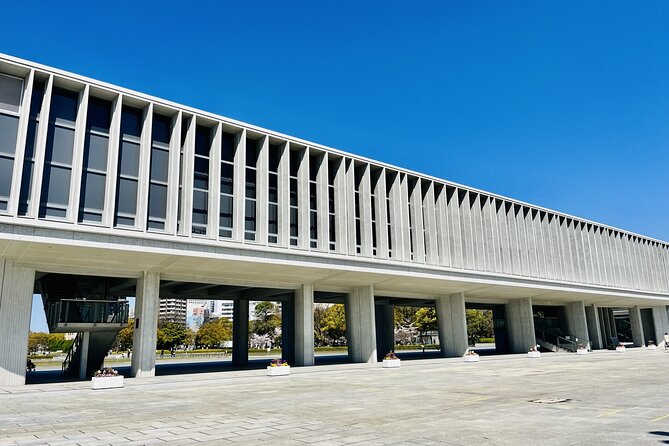
The devastating effects of the atomic bombing of Hiroshima reverberated worldwide, sparking profound discussions on the ethics of nuclear warfare and the need for global disarmament. The sheer devastation and loss of life shocked the global community, prompting intense scrutiny of the decision to use such a destructive weapon.
Three key impacts of the Hiroshima bombing on the global stage include:
-
Accelerating the nuclear disarmament movement, as the world grappled with the devastating potential of atomic weapons.
-
Strengthening international organizations like the United Nations, which were tasked with preventing the spread and use of nuclear weapons.
-
Influencing the development of international laws and treaties governing the use of weapons of mass destruction.
Lessons Learned and Implications
From the Hiroshima bombing, the world learned crucial lessons about the devastating humanitarian and environmental impacts of nuclear weapons, which have profoundly shaped international efforts to prevent their future use.
The tragedy highlighted the immense human suffering caused by nuclear attacks, sparking global outrage and a renewed push for nuclear disarmament. It also demonstrated the long-lasting effects of radiation on public health and the environment, underscoring the need for robust emergency response and recovery plans.
These lessons have informed the development of international treaties, such as the Nuclear Non-Proliferation Treaty, and strengthened the call for the complete elimination of nuclear weapons worldwide. The Hiroshima bombing remains a sobering reminder of the catastrophic consequences of nuclear warfare.
Preparing for the Walking Tour
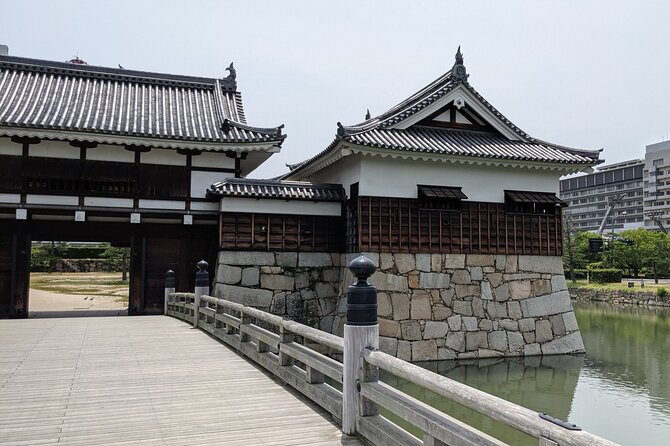
To prepare for the Hiroshima Walking Tour, visitors should first familiarize themselves with the meeting point at the Hiroshima Gokoku Shrine and the end point at the Hiroshima Peace Memorial Museum.
Depending on their mobility needs, they’ll want to confirm the tour’s wheelchair and stroller accessibility, as well as the availability of transportation services.
Reviewing the tour’s cancellation policy and making any necessary arrangements in advance can also help ensure a smooth and meaningful experience.
The tour’s key features include:
- Duration: Not specified
- Maximum capacity: 15 travelers
- Free cancellation up to 24 hours before the start of the experience.
Frequently Asked Questions
How Long Is the Walking Tour?
The duration of the Hiroshima Walking Tour is not specified in the knowledge provided. The tour overview indicates the tour’s capacity is a maximum of 15 travelers, but the exact length of the tour is not mentioned.
Is There an Option for a Private Tour?
The tour doesn’t explicitly offer a private option, but travelers can inquire about arranging a private tour. The standard tour is designed for small groups of up to 15 participants.
Do We Get to Visit the Atomic Bomb Dome?
Yes, the Hiroshima Walking Tour includes a visit to the iconic Atomic Bomb Dome, which is a UNESCO World Heritage Site and one of the few remaining structures left standing after the 1945 atomic bombing.
Can We Take Photos During the Tour?
Participants can take photos during the tour, as it’s generally allowed at the tour sites. However, visitors should be mindful and respectful, avoiding disruptive behavior that could interfere with the tour experience or disturb other participants.
Is There a Discount for Students or Seniors?
The tour doesn’t specify if there are discounts for students or seniors. You’ll need to check with the tour provider directly to see if they offer any reduced rates for those groups.
Recap
The Hiroshima walking tour provides a poignant and powerful exploration of the city’s tragic history.
Visitors can witness the enduring legacy of the atomic bombing, while also learning about Hiroshima’s remarkable resilience in the face of unimaginable devastation.
The tour serves as a solemn reminder of the horrors of war and the importance of peace, inspiring visitors to reflect on the lessons learned and work towards a more just and peaceful world.
More Walking Tours in Hiroshima
- 3 Hours Walking Tour in Hiroshima Peace Memorial Park
- Hiroshima Peace Memorial Park Private Guided Walking Tour
- Historical Highlights of Hiroshima Walking Group Tour
- Hiroshima and Miyajima A Walk Through of History and Peace
- 4 Hour Private Hiroshima City Walking Tour
- 7 Hours Private Customizable Walking Tour in Hiroshima
More Tours in Hiroshima
- Emtb Tour to See the Beautiful Islands From the Summit
- Hiroshima & Miyajima Tour With English/Spanish Speaker Guide
- Hiroshima: Tomonoura Nostalgic Port Town Private Tour
- Bouldering, Sake and Food, Local Gem Hiroshima Evening Tour
- Hiroshima Night Tour: Craft Beer and Local Bites
- Hiroshima Peace Memorial and Highlights Private Tour With a Local
More Tour Reviews in Hiroshima
Not for you? Here's more things to do in Hiroshima we have recnetly reviewed
- 2 Best Dining Experiences In Hiroshima
- 2 Best Dinner Tours In Hiroshima
- 6 Best Full-Day Tours In Hiroshima
- 4 Best Lunch Experiences In Hiroshima
- 11 Best Food Tours In Hiroshima
- Hiroshima and Miyajima by Bike and Boat
- 5-Day ONE WAY Bus to North Hyogo From Fukuoka to Hiroshima
- Japan: 7-Day Tour of Tokyo, Osaka, Hiroshima & Okinawa
- 3-Day ONE WAY Bus Tour to Hiroshima via SANIN From Fukuoka
- Hiroshima Highlights Private Day Tour
- Hiroshima and Miyajima Day Trip From Kyoto/Osaka
- From Osaka/Kyoto: Hiroshima & Miyajima Private Guided Tour
